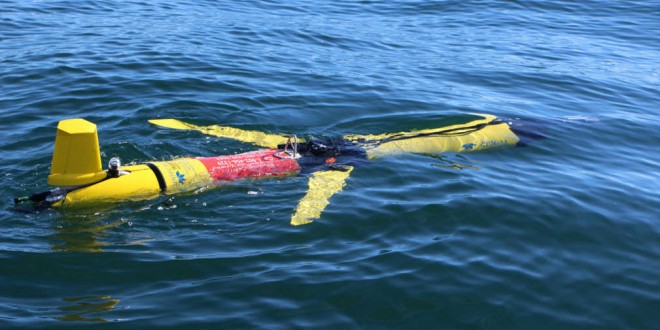The University of Victoria, is leading a mission that aims to help protect rare and threatened baleen whales from ship strike.
Over the next three weeks, a two-metre underwater ocean glider equipped with acoustic sensors, sonar and hydrophones will allow researchers to track whale movements by listening to and recording their sounds along the shelf break in Clayoquot Canyon.
The BC project led by UVic geographer David Duffus, director of UVic’s Whale Research Lab, is part of the national WHaLE project (Whales, Habitat and Listening Experiment) which seeks to define whale habitat and develop, test and implement a near real-time “whale alert” system to reduce the risk of ship-whale collisions.
The multidisciplinary team is focusing on ecologically sensitive whale habitats on the coast of Atlantic Canada and now off western Vancouver Island. Initial success has been met on the East Coast in known habitats of the critically endangered north Atlantic right whale.
“Ocean gliders are a new technique for gaining insights into whale ecology on Canada’s West Coast,” says Duffus. “Many species of concern under Canada’s Species at Risk Act are termed ‘data deficient.’ We need more information on whale habitats and whale feeding ‘hot spots’ so we can put in protective measures, such as real time whale-alerts for shipping traffic.”
Large baleen whales—such as humpback, sei, blue and the very rare North Pacific right whale—are difficult to survey, mostly due to how much time they spend underwater far from land as they feed on tiny zooplankton and/or small fish. By listening for characteristic whale vocalizations, researchers will track the whales’ movements and distribution.
Since ocean gliders can monitor at night and in poor weather conditions, researchers will have more in-depth data to map baleen whale habitat and key feeding spots. The data will guide conservation efforts to protect whales from shipping traffic and noise in key marine locations.
Agencies/Canadajournal
 Canada Journal – News of the World Articles and videos to bring you the biggest Canadian news stories from across the country every day
Canada Journal – News of the World Articles and videos to bring you the biggest Canadian news stories from across the country every day



